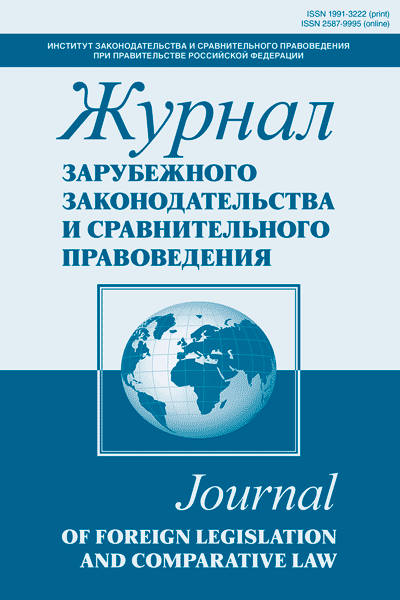The present article evaluates history of swap agreements’ application and their functioning system in the framework of intercentral bank relations (in particular by the Federal Reserve System of the United States (the Fed)). Swap includes two transactions: the first is a currency exchange on the spot market rate and the second is a future transaction on the rate defined in advance. This mechanism proved its efficiency within its application through history. In 1970s, during a radical transformation period of an entire global currency architecture caused by collapse of Bretton Woods’s system the Fed applied swap agreements to promote stability on financial markets and particularly on currency markets. Later during the Global Financial Crisis of 2008 these agreements again have become rescue measures for the global financial system, as the financial shock caused liquidity deficit for financial institutions and thus cut dramatically credit supply. And finally nowadays the global financial system is badly in need of swap agreements. The swaps’ force of attraction is that firstly it differs from crediting as the latter is one way currency extension, while swap agreement is the exchange of equivalent values. And secondly it fixes the rate of the future currency transaction what lightens both monetary regulation within national jurisdiction and regulation on the level of public international law.
global financial system, swap agreements, Federal Reserve System of the United States.
1. Exchange Stabilization Fund History. URL: https://www.treasury.gov/resource-center/international/ESF/Pages/history-index.aspx (data obrashcheniya: 27.07.2016).
2. Fernández-Arias E., Levy-Yeyati E. Global Financial Safety Nets: Where Do We Go From Here? Washington, 2010. (Working Paper, n. 231). URL: http://repositorio.ipea.gov.br/bitstream/11058/6420/1/PWR_v4_n3_Regional.pdf (data obrashcheniya: 27.07.2016).
3. Gavin F. J. The Gold Battles within the Cold War: American Monetary Policy and the Defense of Europe, 1960-1963. URL: http://lbj.utexas.edu/faculty/gavin/articles/gold_battles.pdf (data obrashcheniya: 27.07.2016).
4. Moghadam R., Hagan S., Tweedie A. eds. The Fund’s Mandate Future Financing Role. URL: http://www.imf.org/external/np/pp/eng/2010/032510a.pdf (data obrashcheniya: 27.07.2016).
5. Richardson G., Komai A., Gou M. Gold Reserve Act of 1934. URL: http://www.federalreservehistory.org/Events/DetailView/13 (data obrashcheniya: 20.06.2016).
6. Rojas G., César C. Regional Liquidity Mechanisms in Developing Countries. Perspective of the World. 2012. Vol. 4. No. 3. URL: http://repositorio.ipea.gov.br/bitstream/11058/6420/1/PWR_v4_n3_Regional.pdf.
7. Valyutnyy stabilizatsionnyy fond. Ofitsial´nyy sayt Ministerstva finansov SShA. URL: https://www.treasury.gov/resourcecenter/international/ESF/Pages/esf-index.aspx (data obrashcheniya: 07.07.2016).
8. Krokhina Yu. A. Valyutnoe pravo. 3-e izd. M., 2011.





